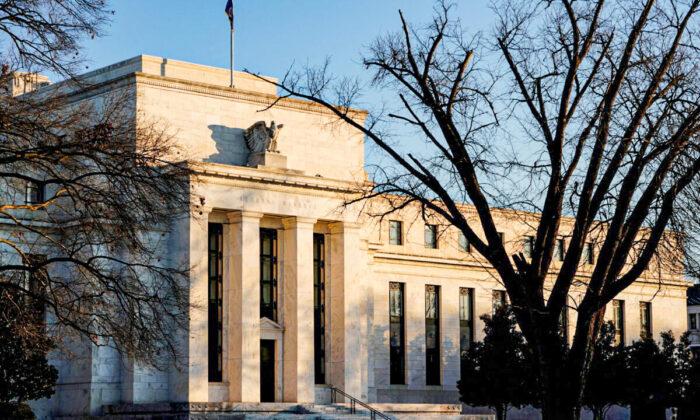Most people don’t realize that expansion and contraction of the Federal Reserve’s balance sheet are designed to keep global trade running smoothly. The popular view, which is supported by the Fed, is that monetary policy can promote price stability, maximum employment, and moderate long-term interest rates. Few realize how the Fed moderates long-term interest rates.
The widely held view is that the Fed purchases or sells U.S. Treasury and mortgage-backed securities to directly manipulate interest rates. When the Fed reduces its balance sheet by selling securities, interest rates should rise, and when the Fed increases its balance sheet by buying securities, rates should fall.
Yet, interest rates often move in the opposite direction that the Fed intends without any rational explanation from the Fed itself. Some experts believe that the Fed’s balance sheet has a minimal effect on Treasury yields, as is evident in how yields move during successive rounds of quantitative easing and one round of quantitative tightening.
History shows that the Fed’s ability to affect the direction of Treasury yields mostly occurs during large changes in its asset purchases when Treasury yields fall as a result of a monetary emergency. As the Fed continues to expand its balance sheet, Treasury yields can fall or rise, depending on how well the global economy is performing.
During the Fed’s only instance of reducing its balance sheet, Treasury yields fell despite the consensus view that they had to rise. Now, as the Fed is starting to taper its asset purchases, investors once again believe that it’s a foregone conclusion that Treasury yields will rise.
Despite the belief that yields must rise, they’ve been in a general decline for the past 40 years. The reason Treasury yields have been steadily falling is due to the dollar being the global reserve currency and to the increase in global trade.
The primary export of the United States is dollars or inflation. It’s the role of the United States to provide enough dollars to the global economy. Without the ability to print money, the Fed can’t provide dollars to the global economy. All it can do is facilitate the export of dollars.
Dollars are exported through global trade as foreign-produced goods and services are paid for in U.S. dollars. Foreign producers trade their excess dollars for local currency with their foreign banks. The foreign banks, in turn, trade their excess dollars with their foreign central bank.
As dollars build up in a foreign central bank’s account, they become inflationary. To taper the effects of inflation, a foreign central bank will purchase U.S. Treasury securities, typically at a regular Treasury auction. By purchasing Treasury securities, a foreign central bank can send those dollars back to the United States.
Over time, an increasing number of dollars builds up in foreign economies, which leads to a steady increase in inflation. At the same time, there’s an accumulation of U.S. Treasury securities held by foreign investors and central banks. As foreign and international investors accumulate more Treasury securities, yields fall.
This relationship is evident in the regular Treasury auctions, where foreign bidders tend to purchase more than 50 percent of all U.S. debt issued. As long as the global trade cycle is working, foreign investors and central banks must regularly transfer their excess dollars back to the United States by purchasing an increasing amount of U.S. debt or risk abnormally high rates of inflation.
When the global trade cycle slows and foreign investors need dollars, they tend to purchase less U.S. debt. When global trade slows considerably, as it tends to do during recessions, foreign investors and central banks can become net sellers of Treasury securities due to their need for dollars.
When foreign investors purchase fewer Treasury securities, the Fed often intervenes in the market through quantitative easing. By purchasing Treasury securities, the Fed is merely filling the gap created by the reduction of Treasury purchases by foreign investors and central banks.
As global trade increases, the need for the Fed to intervene decreases. Around the time that the Fed announced its plan to taper its balance sheet purchases, the percentage of Treasuries foreign bidders were taking at the monthly Treasury auctions had jumped. This increase in purchases was an indication that the Fed should now reduce its bond purchases as the global economy is improving.
The Fed affects global trade by moderating long-term interest rates when both the global economy and the amount of foreign purchases of U.S. debt slow. With the global economy recovering and foreign purchases of Treasury securities increasing, the Fed no longer needs to fill as large of a gap.
As foreign investors and central banks resume their normal role of purchasing Treasury securities as an increasing amount of dollars flow overseas, Treasury yields will continue to decline. The reason Treasury yields must continue declining is that new dollars can only be created by the commercial banking system, not the Fed.
History shows that consumers and corporations tend to borrow more as rates fall, which is why Treasury yields have been declining alongside an increase in foreign purchases for the past 40 years. By moderating long-term interest rates, the Fed has successfully helped facilitate a global recovery, which, in turn, will lead to lower long-term interest rates, just as past balance sheet tapers have done.





